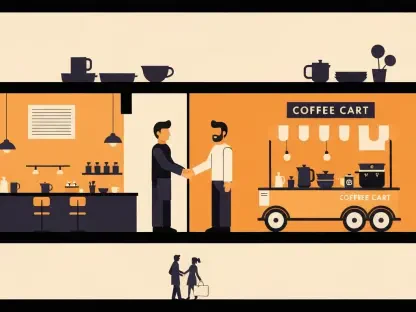Picture a traveler seamlessly earning rewards for both a luxurious hotel stay and an international flight with a single trip, maximizing value in an increasingly competitive loyalty market. This scenario is now a reality with the strategic alliance between Marriott International’s Bonvoy program and Lufthansa Group’s Miles & More, a partnership that has reshaped the travel rewards sector. This analysis explores the implications of this collaboration, delving into how it reflects broader market dynamics and addresses the evolving demands of frequent travelers for integrated benefits.
The purpose of this examination is to uncover how such partnerships influence customer retention, drive industry innovation, and set benchmarks for loyalty programs. With travel demand surging and consumer expectations shifting toward flexibility and value, understanding these alliances offers critical insights for stakeholders across hospitality and aviation. This analysis aims to provide a clear perspective on current trends and future projections in the loyalty space.
By dissecting this partnership, the focus will be on its impact on market positioning, competitive strategies, and traveler behavior. The discussion will navigate through data-driven trends, potential growth areas, and challenges that could shape the trajectory of integrated rewards systems. This exploration is essential for industry players looking to adapt to a landscape where cross-sector collaborations are becoming a cornerstone of customer engagement.
Market Dynamics and Strategic Insights
Current Trends in Travel Loyalty Programs
The travel loyalty market has witnessed a significant pivot toward integrated ecosystems, where partnerships between hotels and airlines are no longer optional but essential for staying competitive. Programs like Marriott Bonvoy and Miles & More are capitalizing on a growing consumer preference for unified rewards, with industry data indicating that over 60% of frequent travelers value the ability to earn points across multiple travel sectors. This trend, driven by a post-pandemic surge in travel demand, underscores the need for brands to offer seamless experiences that cater to a desire for convenience and enhanced value.
This particular alliance stands out due to its scale and immediacy, linking over 30 Marriott brands across 10,000 destinations with Lufthansa’s extensive flight network. Unlike previous partnerships that often focused solely on points conversion, this collaboration introduces dual earning opportunities—allowing Bonvoy members to accrue 40 Miles & More Points per qualifying stay, capped at 120 annually, alongside existing rewards. Such structures are becoming a key differentiator, pushing competitors to rethink their own offerings to avoid losing market share.
Moreover, the emphasis on elite status benefits, such as automatic Marriott Bonvoy Gold Elite status for Miles & More Senator and HON Circle members, taps into a niche but lucrative segment of high-value travelers. These perks, including late checkout and room upgrades when available, address a critical pain point: the fragmentation of status across programs. As the market leans toward personalization, this move signals a deeper understanding of traveler needs, potentially setting a new standard for loyalty engagement.
Competitive Positioning and Market Impact
Analyzing the competitive landscape, this partnership positions Marriott and Lufthansa as frontrunners in a crowded field of loyalty programs. Compared to other alliances, such as those between Hilton Honors and select airlines, the depth of integration here—combining points earning with status recognition—offers a more holistic value proposition. This strategic alignment not only strengthens brand loyalty among existing members but also attracts new customers seeking comprehensive travel benefits, potentially increasing market penetration in key regions like North America and Europe.
However, challenges loom on the horizon, particularly around scalability and consistency. The annual cap on Miles & More Points earned through Marriott stays could frustrate ultra-frequent travelers, while regional variations in service delivery or redemption options might create disparities in member experience. Competitors could exploit these gaps by offering uncapped earning structures or more localized benefits, highlighting the need for Marriott and Lufthansa to refine their approach to maintain a competitive edge in diverse markets.
From a broader market perspective, this alliance reflects a shift toward cross-industry collaboration as a growth driver. It pushes smaller players to either form similar partnerships or risk losing relevance, while also encouraging innovation in areas like digital integration for account linking and reward tracking. The ripple effect could redefine how loyalty programs are structured, with an increasing focus on creating ecosystems that extend beyond travel into lifestyle and retail sectors.
Future Projections for Integrated Loyalty Systems
Looking ahead, the trajectory of travel loyalty programs points to deeper integration and technological advancement. Projections suggest that by 2027, over 80% of major hospitality and aviation brands will participate in cross-sector alliances, driven by consumer demand for interconnected rewards. Innovations such as AI-driven personalization and blockchain for secure points management are expected to enhance the user experience, making partnerships like this one even more impactful in retaining high-value customers.
Economic factors, including fluctuating travel budgets and inflationary pressures, will also shape the market, potentially pushing programs to offer more flexible redemption options or tiered benefits to cater to diverse income segments. Regulatory landscapes, particularly around data privacy, could impose stricter guidelines on how member information is shared between partners, necessitating robust transparency measures to sustain trust. Marriott and Lufthansa will need to navigate these complexities to ensure their alliance remains a market leader.
Speculatively, the success of this partnership could inspire expansions into non-travel sectors, such as retail or dining, creating a more comprehensive rewards network. Emerging markets, particularly in Asia-Pacific and Africa, present untapped potential for growth, where tailored benefits could drive adoption among new demographics. Staying ahead will require continuous adaptation, leveraging data analytics to predict traveler preferences and adjust offerings in real time, ensuring relevance in an ever-evolving market.
Reflections and Strategic Pathways
Reflecting on this market analysis, the collaboration between Marriott Bonvoy and Miles & More emerges as a pivotal moment in the travel loyalty sector, highlighting the power of integrated rewards to enhance customer engagement. It underscores a critical industry shift toward unified ecosystems, where dual earning structures and elite status perks have become benchmarks for success. The partnership’s global reach and immediate accessibility stand out as key strengths, despite challenges like points caps and regional inconsistencies.
For industry stakeholders, the next steps involve leveraging this model to explore similar cross-sector alliances, focusing on scalability and localized benefits to address diverse traveler needs. Investing in technology to streamline account integration and personalize rewards is seen as a priority to maintain a competitive edge. Additionally, monitoring consumer feedback and market trends becomes essential to adapt offerings dynamically, ensuring long-term relevance.
Looking beyond immediate outcomes, the broader implication is a call to innovate continuously, exploring untapped markets and sectors for potential partnerships. This alliance serves as a reminder that success in the loyalty space hinges on understanding and anticipating traveler expectations, paving the way for more connected and rewarding travel experiences in the years to come.









